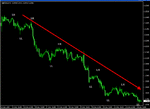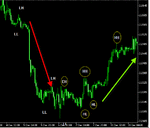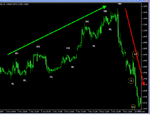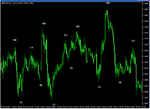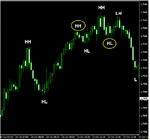A time frame is trending when a succession of obvious higher swing highs (HH) and higher swing lows (HL) results in an uptrend, with the opposing lower swing highs (LH) and lower swing lows (LL) occurring in a downtrend. (see pic 1)
A trend on any time frame is said to be in question when, continuing with a downtrend example, the last LL then last LH of the downtrend is exceeded to the upside, from an area of support, directly or following an HL from it’s lowest point.
This is shown in the example ; a downtrend of lower highs and lower lows was in place on this time frame, until an equal high (EqH) to it’s last LH from support found at it’s lowest point was then succeeded to a HH following a HL indicating that the down trend on this time frame could be at an end for now. Indeed a 2nd Higher Low (HL) resulted in a second Higher High, (HH.) establishing then a new uptrend (see pic 2)
Pic 3:
In the further example below, this time an uptrend composed of classic HH’s and HL’s was quickly reversed by a Lower low (LL) than the last HH and HL of the uptrend before a further Lower High (LH) and Lower Low (LL) occurred, establishing then a new down trend. Using the example , When the last HH and HL an uptrend is exceeded to the downside, it puts into question the prevailing uptrend on that time frame, and may indicate the beginning of a new opposing trend, or indeed a period of consolidation. The opposite holds true for a downtrend.
Looking now at when a time frame is ranging/consolidating. The chart below shows a random distribution of HL, HH, LL and LH as price consolidated and remained undecided about it’s next direction. (see pic 4.)

